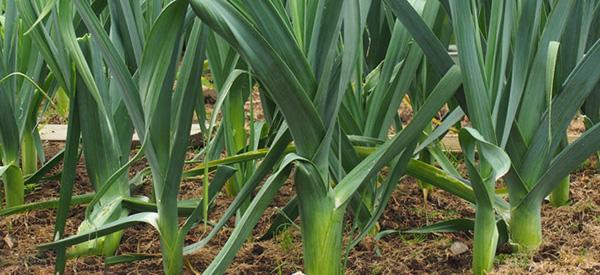
Leeks
Leeks (Allium ampeloprasum var. porrum) are bulbous vegetables with a leafy green top and white fleshy stalk. It is a member of the onion family, slightly bigger than a scallion – and more expensive. Leeks are cultivated mainly for their culinary value, and it is used for a variety of dishes. They are versatile and go well with different food, but they are especially notable in complementing the taste of cream and cheese.
These annual herbs thrive in temperate climates and are planted in early spring or fall. Like onions, leeks are also nutrient-dense and are useful for treating a variety of health conditions. There are different cultivars of leeks, and the two common types are the summer leek and overwintering leek. Summer leeks are smaller and less winter-hardy. They often bear green leaves and with a mild flavor and aroma. They are usually harvested in the summer, with their short maturity growth period. Overwintering leeks are harvested in the spring and have a strong flavor compared to summer leeks.
Leeks are also one of the components of the Bouquet Garni or bundle of aromatic herbs. They are paired with celery, parsley, thyme, or bay leaf twined together for adding flavor to soups or sauces. These herbs are bundled securely and submerged into the simmering liquid. It makes them easier to remove after the end of cooking. Leeks lend the mild and onion-y flavor that spices up the taste and aroma of the soup dish or sauce.
The History Of Leeks
Leek is an ancient crop that has been popular in many countries since the first century. It is a vegetable native to the Middle East and the eastern Mediterranean. It is a common ingredient in Egyptian cuisines that was even included in their old recipe books. Some drawings and carvings also depict the prominence of leeks in the Egyptian diet. They are highly valuable because of their significance in improving the health and condition of the throat. They are also used as barter instruments for commodities in ancient Egypt.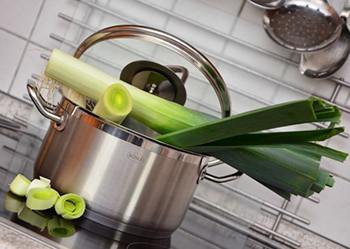
The long history of leeks is not only credited to the Middle East. They are also cultivated in Western Europe and became the national emblem of Wales. According to the legend, leek leaves served as identification for Welsh soldiers to classify themselves against their opponents during their battle against the Saxons. The vegetable earned its esteemed status in the war and was a symbol of being a good countryman. They are also worn every St. David’s Day in Wales as a tribute to Saint David, who would not eat any other food during fasting but leeks.
However, leeks did not stay in Europe and the Middle Eastern countries alone. Early European settlers brought the plant to North America where they were cultivated and spread throughout the country. To this day, leeks are still an important spice in a variety of dishes worldwide.
Where This Plant Is Found
Leeks can grow in temperate climates and may thrive anywhere on the continent across the world. They are native crops in the Middle East and Mediterranean lands. Thus, they are abundant in Egypt, the Mediterranean, Ireland, and Wales. There are also wild leeks called ramps that thrive mostly in North America.
Unfortunately, leeks are not as popular in the US and Canada as they are in Europe where they are often called the poor man’s asparagus. Recently, France is the world’s largest cultivator and producer of leeks, mostly used for gourmet cuisines.
Related: The Complete Map of Edible Plants: Find Out What You Have in Your Area! (Video)
How To Identify Leeks
Leeks are bulbous plants, meaning they grow from bulbs with a shallow root system. They resemble an overgrown green onion or scallion. However, instead of the round bulb that onions develop as they mature, leeks grow broad and succulent stems instead.
The edible parts of the leeks are the white and the light green portion of the stalks. That’s why you will often see them sold with trimmed tops in supermarkets. The greener portion has a slightly bitter taste than the paler ones.
- Leaf. The leaves of the leek have a fanning and sheath-like appearance. It grows straight off from the tubular bulb. From the base of the plant, the leaves are pale green that increases their color towards the tip.

- Flowers. Leeks also grow lovely flowers at the end of their seeding phase that grows in a pom-pom-like cluster. These spherical flowers have a white papery coating in the head that will eventually sprout tiny purple flowers.
- Roots. The roots of the leeks are mostly fibrous as is common to the allium family, only more vigorous and widespread. It grows main roots that grow vertically and horizontally from the base of the plants up to 21 inches. The tiny and fibrous roots that attach to the main roots also spread in all directions in the soil.
- Stem. Leeks have white succulent stems that grow straight from their roundish bulb base. It can grow from about 1 to 2 inches in diameter. These stems spring out into leaves that can grow up to 3 ft high.
- Seeds. Mature leeks produce seeds that look like tiny, black, pyramid-shaped seeds. These are found inside the papery flower head or pods. These seeds will emerge once the flower has dried out.
Related: Plant Identification Guide – 400 Wild Plants That You Can Forage For (Video)
Early Season Leeks
These types of leeks are less hardy and are harvested from September to November. These crops include varieties like King Richard, Columbus, and Varna. They are smaller than other leeks with a milder flavor.
Mid-Season Leeks
They have excellent flavor and are generally tender when cooked. These varieties can withstand frost and cold and are harvested from December to February. The popular mid-season leeks are Musselborough, Porbella, Edison, and Oarsman.
Late-Season Leeks
These are hardy overwintering leeks with crops ready for harvest from February to April. They are strongly flavored and have strong resistance to extreme cold. Bandit, Titan and Giant Musselborough, and American Flag are examples of late-season leeks.
How To Grow Leeks
Leeks are easy to grow vegetables that thrive well in full sunlight and well-drained soils. They are best planted during spring for harvest in their appropriate seasons. They can grow well in garden beds or even in containers.
You can easily grow leeks from seeds or propagate them from kitchen scraps.
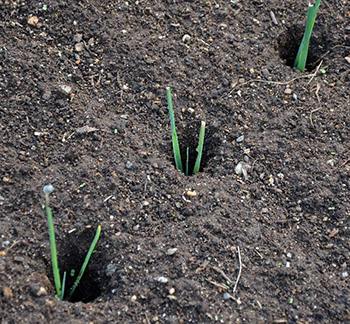
You can sow seeds directly in a seed tray with rich humus and cover them lightly. However, if the temperature is between 55 to 77°F, it may take about 12 days for the seeds to germinate. You can transplant the seedlings when they are at least 6 inches tall.
Transplant the seedlings in narrow holes that are 6 inches apart. Do not backfill the soil in the hole but fill it with water and allow the soil to refill it naturally over the days. The loose soil layer is the secret to growing plump leeks with a bigger diameter.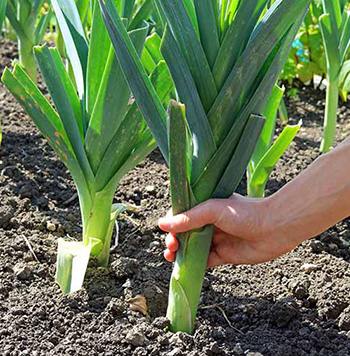
If growing leeks from scraps, you can cut off the top part of the stalk and soak the rooted end in water. Place it on the sunny part of the home and wait until green stalks shoot up. Replant this new growth in the garden when it is about 2 to 3 inches tall.
Leeks prefer eight hours of full sun and well-draining soil and mulch. It also needs about an inch of water per week to grow to its full growth potential. When growing leeks in a container, maintain the cluster to only 2 to 3 plants to allow more room for the roots to grow. In the garden, it needs a 6-inch distance to flourish more abundantly.
Related: 10 Plants That You Should Never Plant Together (Video)
How To Harvest Leeks
You may harvest leeks 60 to 120 days after, depending on the variety. The best gauge is when the stalk is already about an inch in diameter. If the soil is loose, you can tug it off the ground to loosen it. Or you may loosen them with a spading fork if the soil around the plant is tight.
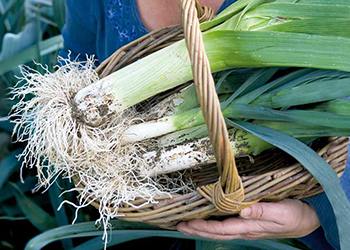
In warmer regions, you can continue harvesting leeks throughout the winter season. But in cold areas, you can extend the harvest season by keeping about an inch of mulch around the plant. Dig up and store your leeks before the ground freezes over.
Wash the freshly uprooted leeks with water to remove soil between the stalks. You can put them in an airtight plastic bag and store them in the crisper. If you want to store it longer, leave the roots intact and cut off the leaves leaving only one inch of the green portion. Put it upright in a box and cover them with sawdust, sand, or vermiculite. Store this in a cool place and they are good for up to about 8 weeks of storage.
Alternatively, you can also store frozen leeks by slicing and blanching them in boiling water for a minute. Drain the water and allow it to dry before storing it in your plastic freezer bags.
What Leek Is Good For And Natural Remedies Made From It
Leek, being a member of the onion family, also holds a host of medicinal properties. It is low in calories but contains a high number of vitamins, minerals, and antioxidants. It is also a good immune booster containing Vitamin C twice as that of an orange. Leek can also lower the blood sugar level and ward off age-related mental health degeneration.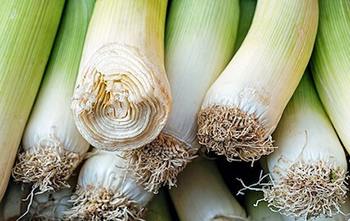
The manganese content of leeks is beneficial for treating premenstrual syndrome (PMS) and thyroid problems in women. Adding it to the daily diet will also curb hunger that aids in weight loss with its high soluble fiber. These soluble fibers are important in keeping the gut healthy and facilitate healthy digestion. It is also an effective remedy against respiratory problems like sore throat, cough, hoarse voice, or pharyngitis.
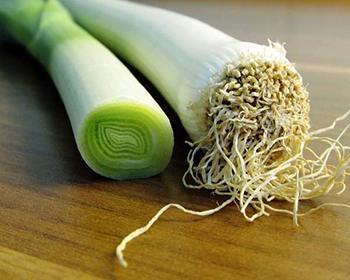
The allium family is also recognized for its potential in treating cancer. Leeks have flavonoids like kaempferol that are presently studied for their effectiveness in treating stomach and colon cancers. It is rich in Vitamin K making it effective against osteoporosis.
It is easy to incorporate leeks in your diet since it is versatile with different dishes. You can also eat them raw, fry, blanch, boil, or pickle them as you wish. Adding them to your everyday diet will give you various benefits not just for upgrading the flavor of food. It will further give you more health benefits with all its beneficial compounds and vitamins.
What Parts Of Plants Are Used For Remedies?
The stalk and leaves of the leek are edible and can be eaten raw. The darker greens may taste bitter with a more pungent taste. These stalks and leaves are often used in decoctions and poultices for home remedies. In Japanese medicine, the whole part of the leek can be grilled and worn around the neck to clear a sore throat and clogged nose.
Leek Poultice
- Cut both ends of the leeks and slice them open lengthwise. Then, cut in the desired length for the poultice

- Wash the leeks and ensure that you remove the dirt that may lodge in between.

- Place the leeks in a bowl and pour boiling water over them. Let it stand for 10-15 minutes. Some people opt to directly boil the leeks in a pot. Strain the water off the leeks.

- Let the leeks cool to a warm/hot temperature that you can tolerate without burning your skin. Heat improves the circulation in the affected area, bringing more antibodies to help treat the problem. As soon as it cools off to a tolerable heat, layer the parts on the affected area.

- Cover the leeks with a clean cloth to secure them. Make sure that it is tight enough so that it won’t fall off, but not too tight that it restricts blood flow.
How to Use:
Let the poultice stay for 20 minutes. You can repeat the procedure 2 to 3 times a day. Leek poultice can be applied to boils, joint swelling, and even sore throat. It can also be applied to the lower abdomen to help improve urine flow.
Related: Similar to Morphine: The Best Natural Painkiller that Grows in Your Backyard (Video)
Warnings and Cautions
Leeks are generally safe for everyday consumption. However, overeating also poses some minor health risks. It can trigger hyperacidity with its high acid content and may aggravate diarrhea. For people with acute kidney stones, leeks are not the best home remedy option. Leeks are diuretics that can exhaust the kidney and cause inflammation or relapse from the illness.
Breastfeeding moms are safe to enjoy leeks. However, it may leach a weird taste in the breastmilk that the baby may not enjoy at all.
You may also like:
10 Remedies You Can Find In Your Kitchen
Add This “Unusual Nutrient” to Coffee or Tea, to Effortlessly and Fully Empty Your Bowels Every Single Morning (Learn More)

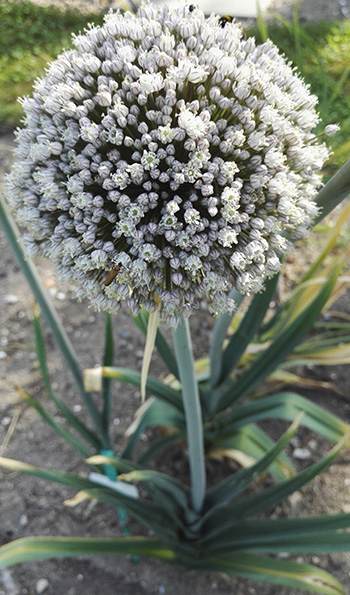

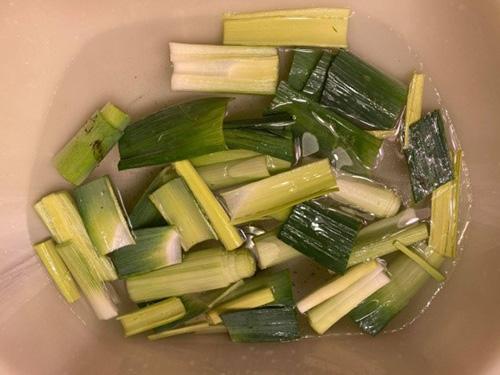
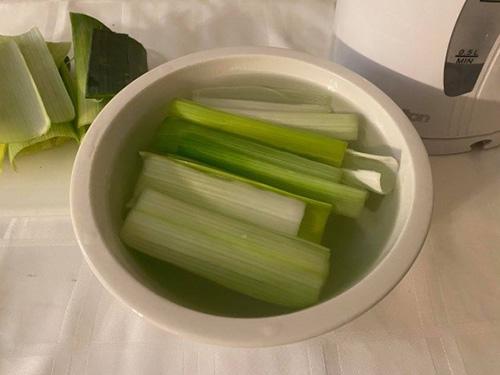
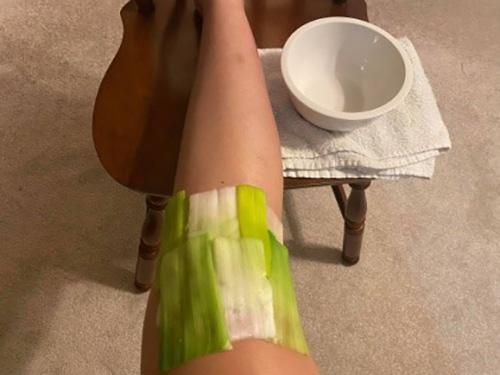

I was hoping to get a hard copy when I purchased online. How can I make it happen?
Hi Roxanne,
Thank you for your interest in our work.
Please check your personal email. I sent you an email regarding your order.
Many blessings and good health!
I’m Australian. Can I purchase a hard copy to send to aus? I bought the pdf styled but it’s difficult for me to access.
I want to know for God sake l am not recieved my copy of the book of which l ve paid for please consider.
Hi John,
Thank you for purchasing “The Lost Book of Herbal Remedies”.
Please check your personal email. I sent you an email regarding your order.
Many blessings and good health!
I don’t understand what you mean l only my grievances thanks
Hello, love the work that you do. I paid for the online will I be able to get a hard copy. I was so excited to get this information that waiting on the book would have me anxious.
Hi Crystal,
Thank you for your interest in our work.
Please check your personal email address. I sent you an email regarding your order.
Many blessings and good health!
Hi, I was hoping to get a hard copy when I purchased online. How can I make it happen?
Does anyone have a recipe to pickle them? Thanks
Pickled leeks sound interesting.